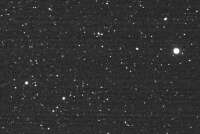
| Christoph Petermann | Homepage |
|
Astrophotography - Digital Astro Imaging
|
Last Update: 29 September 2002
Part 1 | The Canon Powershot G1 Camera
Part 2 | First Astroimages with G1
Part 3 | Lunar Images
Part 4 | Trying Deepsky
Part 5 | Imaging the Planets
Part 6 | Comets
This is an image from 17 * 8 sec stacked. I imported the single images to IRIS and stacked the black & white images automatically. The camera was NOT tracked. I checked wicth the GSC catalog and I can see 11 mag stars on the image. If you click on the image you will the magnified version in 1:1 ratio, which is the cropped center protion of the image.
Image data:
I cropped this image from a much larger one. Then I turned it to grayscale and enhanced contrast. Vega seems to burn a hole into the chip. I have to zoom into the image. Magnification factor with my f5 150 Newton is 37.5. Equivalent 35 mm focal length is about 100 mm * 37.5 = 3750 mm.
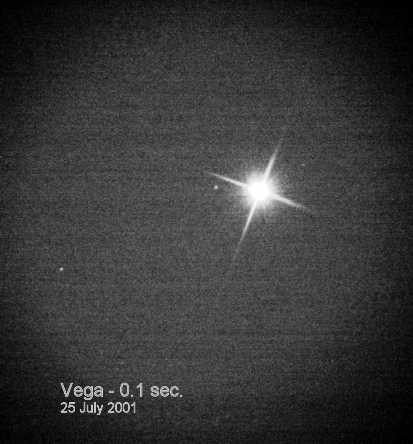
Image data:
This image is also cropped from a larger one, as the 20mm eyepiece vignettes a about a half of the image. The size of the image is reduced, but the inset is at original size. See the details captured. The G1 camera was fixed on a separate tripod in front of the eyepiece. As the moon was already very low above the horizon, seeing was terrible.
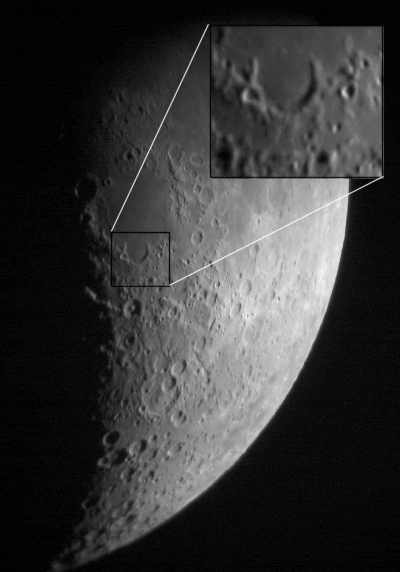
Image data:
The first image shown here is the Alkor-Mizar area in UMa. Sky was not dark, as I took the image at the end of June 2001, when nights are very bright in my place.
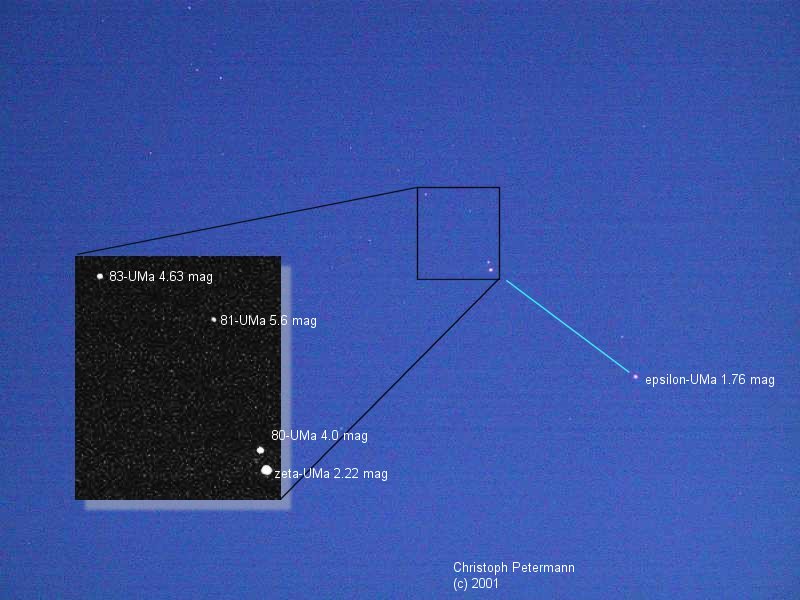
Image data:
This image is already reduced in size to 800*600 pixel. The inset is cut from the original 3.3 MegaPixel (2048*1536) size . I converted it to grayscale and enhanced the contrast. In this image the faintest stars are about 5.5 mag. Assuming that the sky was that bright, much more should be possible.
The second image is cut from an image taken, when it was almost dark with the Milky Way fine visible. You can see the 9 mag star between Alkor and Mizar. There are some stars beside, that are 9.7 and 9.78. They are not artefacts. No darkframe subtracted.
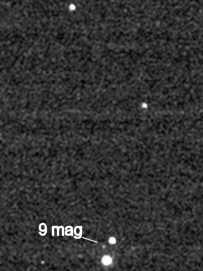 |
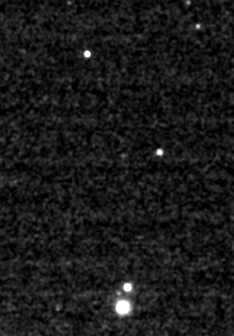 |
| Single image | Two stacked images with IRIS |
Image data:
The second image is cropped from a much larger image. The background is also very bright. I converted again to grayscale. I have added the magnitude of two stars and you see, that there are still some fainter stars than the two shown around 7.1 mag. I expect 8.0 mag or better if the image is taken in darker skies. Also visible is the movement of the stars within the 8 seconds of exposure. I will do further tests with the telescope mounting.
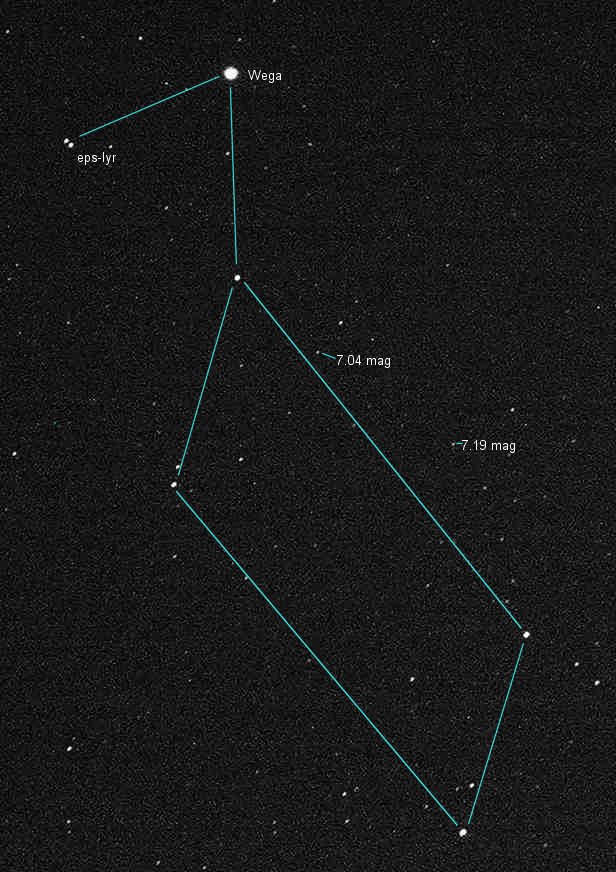
Image data:
Here is a stack of three images. I cropped the *interesting* portion out of the large frame. Here it is easy to locate 9.7 mag bright M57 Planetary nebula. Even more fainter stars are visible here.
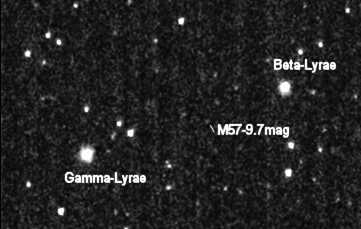
Image data:
|
Text and All Images are Copyright by Christoph Petermann
DF9CY
|
GO (back) and visit my homepage